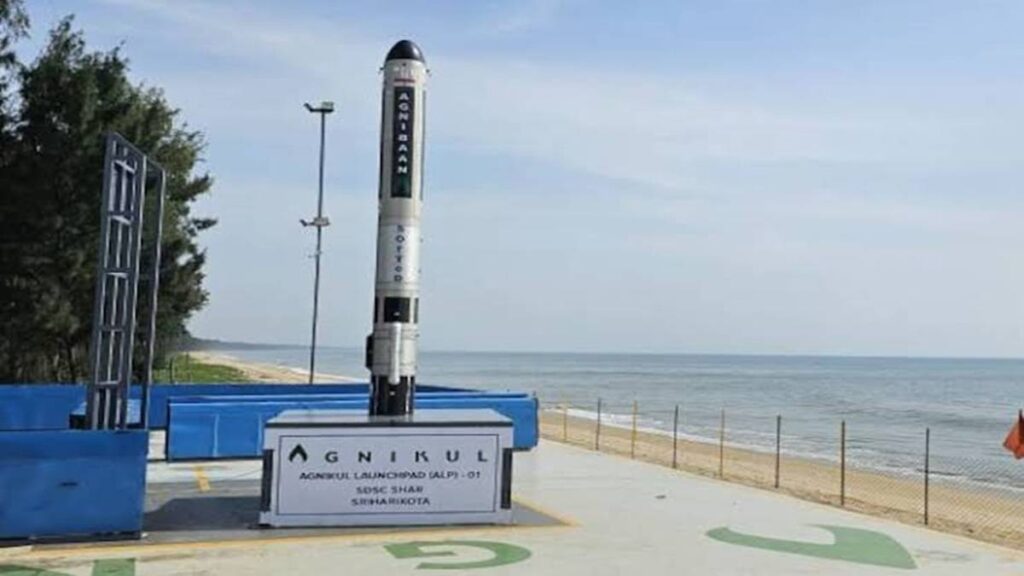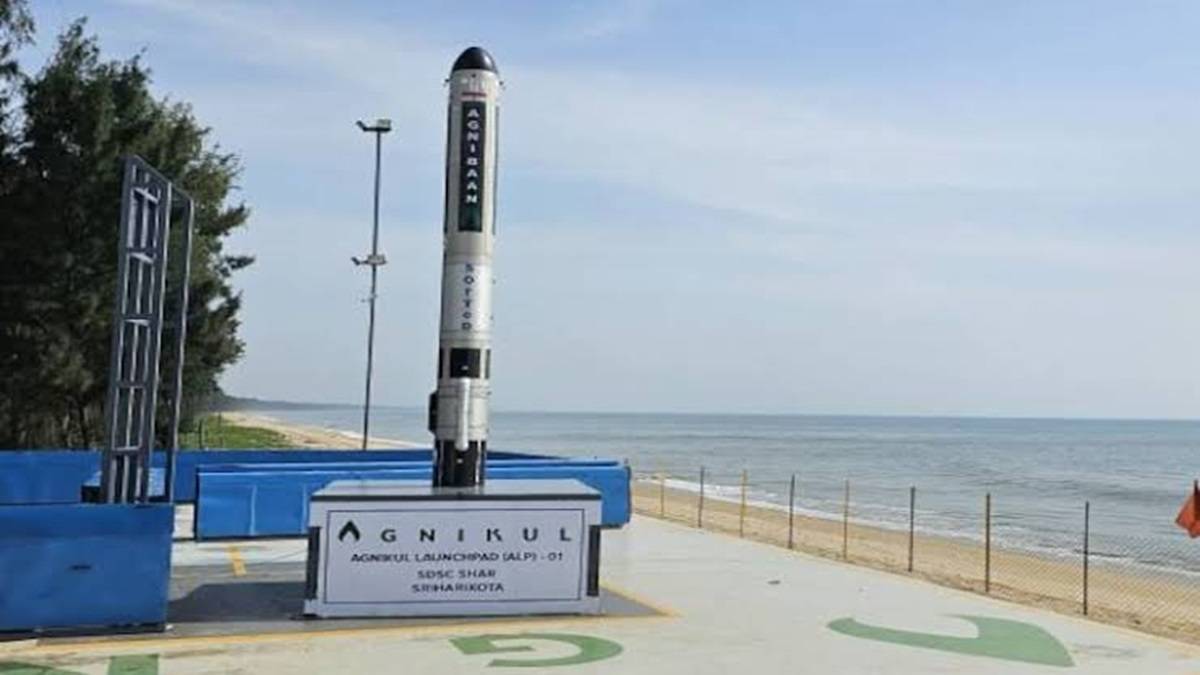After four unsuccessful attempts, Indian space startup Agnikul Cosmos successfully launched the World’s first 3D-printed rocket engine Agnibaan Sub Orbital Technology Demonstrator (SOrTeD) on Thursday (May 30), paving the way for reduced time and costs associated with building rockets and boosting the country’s spacefaring capabilities.

AgniKul Cosmos, a start-up incubated at IIT Madras, on Thursday morning achieved a historic milestone when it launched the world’s first single-piece 3D printed rocket engine, designed and built indigenously in the country. With assistance from Isro, the startup successfully carried out a sub-orbital test-flight of its home-built rocket — Agnibaan — at 7.15 am from Sriharikota.
Not only the world’s first 3D printed engine, Agnibaan SOrTeD has got many firsts in its strides by becoming the first semi-cryogenic engine-powered rocket launch and aso India’s first rocket launch from a private launchpad. Agnibaan is powered by the only rocket engine in the country that uses both gas and liquid fuel (liquid oxygen/kerosene).
Recently Chennai-Based Starup Agnikul Cosmos has launched the World’s first rocket, Agnibaan Sub Orbital Technology Demonstrator (SOrTeD), Powered by a fully 3D-printed engine.
The rocket utilizes liquid propellant-liquid oxygen or kerosene as fuel. Agnikul’s patented Agnilet engine, the world’s first single-piece 3D-printed engine, is the powerhouse behind the Agnibaan rocket. The Agnilet engine was designed, tested, and manufactured entirely in India and was successfully test-fired in 2021.
Indian space startup Agnikul Cosmos successfully launched the World’s first 3D-printed rocket engine on Thursday (May 30), paving the way for reduced time and costs associated with building rockets and boosting the country’s spacefaring capabilities.
Weighing 9,280 kilograms, standing 110 feet tall and 7.5 feet wide, 85% of the rocket was manufactured using 3D-printing technology making it the largest 3D-printed object on the planet, as confirmed on November 24, 2023.
Charles Hull is the inventor of Stereolithography, the first commercial rapid prototyping technology commonly known as 3D printing. The earliest applications were in research and development labs and tool rooms, but today 3D printing applications are seemingly endless.
Humbled to announce the successful completion of our first flight – Mission 01 of Agnibaan SOrTeD – from our own and India’s first & only private Launchpad within SDSC-SHAR at Sriharikota. All the mission objectives of this controlled vertical ascent flight were met and performance was nominal. The vehicle was completely designed in-house and was powered by the world’s first single piece 3d printed engine and also happens to be India’s first flight with a semi cryo engine. Our greatest thanks to INSPACeIND, ISRO, IIT-Madras & our incredibly committed team in helping us prove that a private player can design and fly original space tech hardware in India. MadeInIndiaForTheWorld,” AgniKul said in a post.
Agnibaan is a two-stage rocket with a capacity to carry up to 300 kg to a height of 700 km. The test flight aims to demonstrate the in-house and homegrown technologies, gather crucial flight data, and ensure the optimal functioning of systems for AgniKul’s orbital launch vehicle, the ‘Agnibaan’. It can access both low and high-inclination orbits and is completely mobile — designed for accessing more than 10 launch ports, as per the company.
AgniKul’s core team members were present during the launch, including Prof. Satyanarayanan R Chakravarthy, Founding Advisor, Agnikul Cosmos and Faculty, Department of Aerospace Engineering, IIT Madras, Srinath Ravichandran, co-founder and CEO, Agnikul Cosmos, Moin SPM, co-founder and COO, Agnikul Cosmos, Saraniya Periaswamy, vehicle director, Agnibaan SOrTeD, and Umamaheswari. K, project director, Mission-01and Agnibaan SOrTeD.”We are proud to present India’s first Semi-cryo rocket engine, which is also the world’s most integrated single shot 3D printed piece. It signals the ability to rapidly assemble rockets that is unparalleled,” said Satyanarayanan R Chakravarthy, founding advisor, AgniKul Cosmos and also the head of the National Centre for Combustion Research and Development (NCCRD) at IIT Madras.
Lauding the launch, Isro chairman S Somanath, in a statement, said, “The Department of Space and ISRO congratulates Agnikul Cosmos on the successful launch of ‘Agnibaan – SOrTeD’. The success involving many firsts including 3D printed semi-cryogenic engines, flight control systems, etc., demonstrate the prowess of indigenous design and innovation,” said “It motivates Isro to support the Space startups and non-governmental entities for innovation and Atmanirbharata to create a vibrant space ecosystem in the country.
Agnikul, whose name is derived from the Hindi and Sanskrit work for fire, was founded in 2017 and runs India’s first private launchpad and mission control centre. All other launchpads are operated by Isro. AgniKul becomes the second private company to launch a rocket after India’s first privately developed rocket, from the company Skyroot, flew in 2022.
AgniKul is looking at flying an orbital mission towards the end of the financial year of 2025 and is working with customers on flights starting regularly from CY 2025. Union Minister Rajeev Chandrasekhar also congratulated Agnikul Cosmos for successfully completing its first launch from Agnikul’s own and India’s only private launchpad within Satish Dhawan Space Centre (SDSC SHAR), Sriharikota. “Congratulations @AgnikulCosmos @iitmadras Agnikul successfully completed its first launch from Agnikul’s own & India’s only private Launchpad within SDSC-SHAR. Besides being the world’s first flight with a single piece 3D printed rocket engine, this controlled flight is also India’s first flight with a semi cryogenic engine. The vehicle was completely designed in-house in India and assembled at Agnikul’s facilities within IIT Madras,” Chandrasekhar posted on X.

